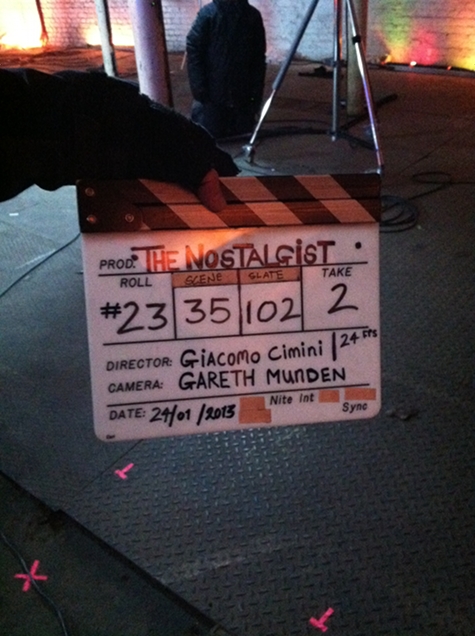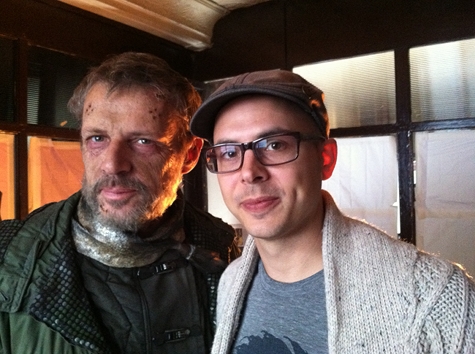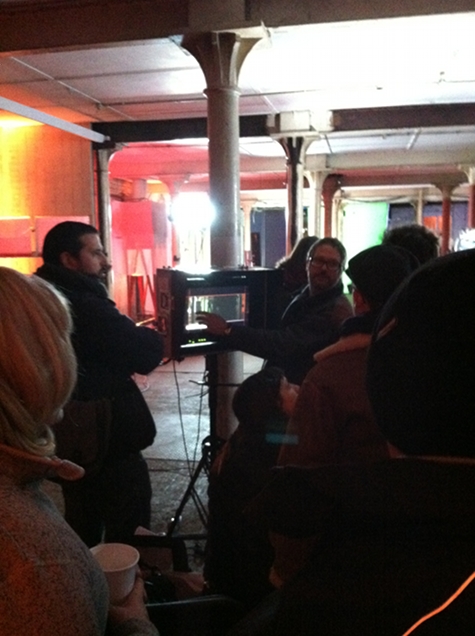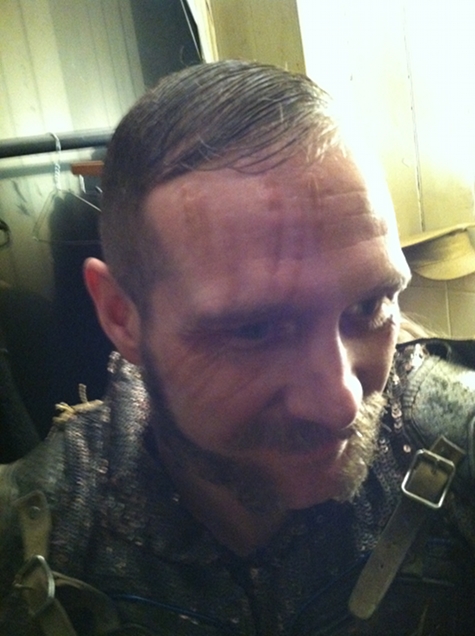Although this is a golden age for film adaptations of science fiction and fantasy into film, Tor.com has never had a piece of the pie…until London-based Italian filmmaker Giacomo Cimini found author Daniel H. Wilson’s Tor.com short story “The Nostalgist” online and decided to make a movie of it. Though “The Nostalgist” is Daniel’s first work of published fiction after getting a Ph.D. in robotics and writing a popular series of non-fiction/comedy books starting with How to Survive a Robot Uprising, he has since gone on to write bestselling novels such as Robopocalypse—which is also being developed for the screen by DreamWorks and Steven Spielberg—and Amped. Since the short film of “The Nostalgist” is in the process of seeking funding for its visual effects, we wanted to touch base with Daniel to get an inside view on the story and the adaptation process.
Q: Before writing “The Nostalgist,” you were probably best known for your funny how-to books about surviving the robot uprising. What inspired your transition to the world of fiction, and this story in particular?
A: Writing sci-fi has always been my dream. I’ve been writing sci-fi short stories since middle school, but it took another decade plus of practice and an actual degree in robotics to finally write one that got published. (Thank you, Tor!) Writing non-fiction was easier for me when I was fresh out of college because I was good at talking to scientists and I was very used to the technical writing. It took me many years to get up the courage to leap full-on into fiction with Robopocalypse. But “The Nostalgist” will always be special to me because it was the first fiction I wrote that anybody ever liked enough to buy.
Q: Every science fiction author has to confront the fact that the world keeps going while their stories stay static. This often means that concepts they invent will wind up becoming prescient—or hilariously obsolete—before their time, but this feeling must be particularly acute to a roboticist who is still immersed in the field as it develops. How have technological changes since you published “The Nostalgist” four years ago altered your view of the story?
A: In “The Nostalgist” people wear augmented reality rigs called eyes™ and ears™ to escape the sights and sounds of a dystopian future. A lot of real-world augmented reality applications at that time were geared toward video games, which in my mind provide illusory places for people to visit and escape from the real world (unless the game world becomes your real world, which is an argument for another time). I wondered what a person would do with this technology if they longed for a place that no longer existed, and for people who were no longer around. With the recent advent of Google Glass, I think “The Nostalgist” takes on a new dimension in which privacy and the shared interactions between people who use augmented reality comes to the forefront. The fresh context created by new waves of technology just adds flavor to the story.
Q: There are currently a few film adaptations of your work in progress: the “The Nostalgist,” which is in post-production, and several longer works (Robopocalypse, Amped, Small Things) in pre-production or development. From a writer’s perspective, what do you see as the prime differences between the adaptation of a short story and of a novel?
A: Despite (or because of) all the added constraints, a novel is much easier to set up for a film adaptation. With all the extra word count, you supply a full plot, character development, and a vividly rendered world. Short stories are much harder to sell, because you only get a glimpse of the world, meet the characters briefly, and there is only so much plot to go around. I am in the process of creating a treatment of “The Nostalgist” as a full-length film, and it’s a lot of work! Transferring a short story to a short film is a much more ideal situation. Luckily, “The Nostalgist” has a sweet beginning, badass action in the middle, and an emotional gut punch at the end that translates well to a short film. No joking, the first rough put tears in my eyes.
Q: Tell us a bit about your involvement in the process of making “The Nostalgist.” Did you work with Giacomo Cimini and his team throughout, or step in when the film was mostly complete?
A: Giacomo (the director) wrote a script that stuck really close to the short story. The first drafts were actually chunks of the short story cut and pasted! He did a brilliant job of picking the best parts, converting them into a visual framework that could be shot, and then adding a few metaphors that provided some thematic structure. I was allowed to revise the scripts and tweak the dialogue, which I truly appreciated. I have sold some film rights to studios before, and they definitely do not ask my opinion on script development! The best part was they let me visit the set in London while they were shooting the film. Seeing my ideas turned into film by a team of over fifty dedicated professionals was awe-inspiring. As a writer, it sends a thrill of humility down your spine to realize how many people are really involved in making a film.
Q: Most fiction changes a little bit, or quite substantially, during the course of being made into a movie. Has the “The Nostalgist” undergone any particularly neat or surprising mutations as it was being adapted? What are you most pleased to have seen stay true to the text?
A: The visual transformation was the absolute genius moment for Giacomo. In the short story, the old man lives in a dystopian world and a Utopian world, depending on whether his eyes™ and ears™ are working. Both places are French visions of the 1950s. The dystopian world is called Vanille and it’s made of slidewalks (rolling roads) and monolithic buildings. He lives in an inflatable structure called gonflables (after the French word for inflatable). The old man’s ideal world is a “Mad Men” kind of place where everyone wears a suit and walks lockstep. Giacomo modified this so that the ideal world was old-school Victorian (beautiful and easy to film in London), and the dystopia was more “traditional” concrete and neon. The contrast is great.
Q: I hear you did some amateur photography of when you were on location visiting the set. Anything you’d like to share?
A:

This just says it all, right? Awesome!

Lambert Wilson is the nicest French movie star that I know. He is wearing make-up here that makes him look homeless, but I’m pretty sure he’s doing well.

Giacomo and the DP at work!

This actor has a stumper scar on his face, which is a little device that first appeared in this short story but later appeared in Robopocalypse. I explained to the actor where he got the scar and how it affected his motivation. Acting!

Some of the characters are a bit frightening.
The drive to fund Wonder Room Productions’ visual effects for “The Nostalgist” short film has seen some strong support from science fiction fans, but is still seeking contributions with one week left in the campaign (which ends on Wednesday, June 5th). Check out the film’s Kickstarter page to see a video from the filmmakers including some early footage of the film, and earn some neat rewards including signed conceptual artwork from the film and a ticket to the London premiere.
Liz Gorinsky is an editor at Tor Books.









